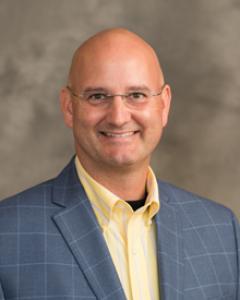Statistical Approaches to Spaceflight Data

Brought to you by Hopkins at Home and the bioastronautics@hopkins Mini-Symposium Series
![]() Follow us on Twitter to join the conversation: @HopkinsatHome, #HopkinsatHome
Follow us on Twitter to join the conversation: @HopkinsatHome, #HopkinsatHome
REGISTER to join the livestream on March 16th at 2:00 PM ET
Please join us March 16 at 2 p.m. for the next bioastronautics@hopkins Mini-Symposium. Speakers will include Dr. Robert Reynolds, current visiting data scientist at NASA’s Human Health and Performance Directorate, and Dr. Robert Ploutz-Snyder, Assistant Dean of Research and Scholarship, at the University of Michigan School of Nursing. Ploutz-Snyder directs the School of Nursing’s Applied Biostatistics Laboratory.
 Dr. Robert Reynolds
Dr. Robert Reynolds
Dr. Robert Reynolds, currently serves as the Visiting Data Scientist for NASA’s Human Health and Performance Directorate (HHPD) at Johnson Space Center in Houston, TX. In this role he helps NASA apply data science and advanced analytics to manage the human systems risk of space flight. Outside of NASA, he studies the long-term morbidity and mortality of highly selected occupational cohorts, such as professional athletes (NBA and MLB) and astronauts (NASA, international partner astronauts, and Russian Cosmonauts). He is also an experienced analytics leader in the healthcare space, having led teams of biostasticians, epidemiologists, and data scientists in commercial and Medicaid health insurers.
 Dr. Robert Ploutz-Snyder
Dr. Robert Ploutz-Snyder
Dr. Robert Ploutz-Snyder directs the University of Michigan School of Nursing’s Applied Biostatistics Laboratory, whose primary mission is to partner with other Nursing faculty in order to further advance the methodological & statistical rigor of our science, and increase our success-rate for external support. He is a member and is among the first 100 professionally accredited statisticians in the American Statistical Association (Pstat®). Prior to assuming his current role, he was a lead Biostatistician in NASA’s Human Research Program at the Johnson Space Center, where he collaborated on numerous grants aimed at better understanding and mitigating the negative effects of spaceflight on humans. Prior to NASA, he was an Associate Professor of Medicine at the SUNY Upstate Medical University in Syracuse, NY, with a highly successful track record of grant collaborations and scholarship.
